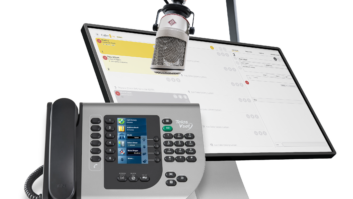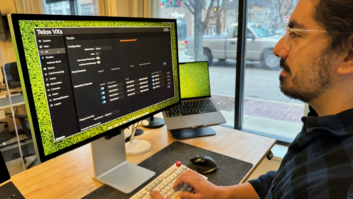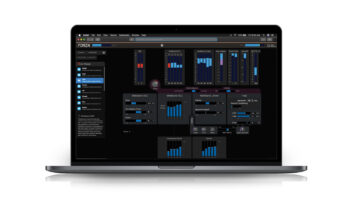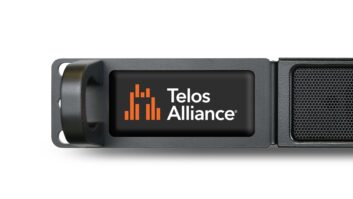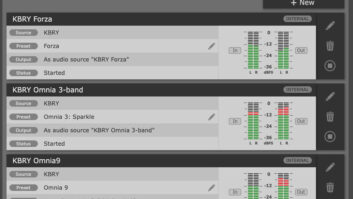CHICAGO — Every engineer has his or her list of favorite products. One of mine is ProFiler, by Telos Systems.
ProFiler can operate in several modes: continuous recording, skimming and “Smart Skimming.” Live audio streaming also is supported. User-configurable recording modes allow you to select bitrates from 16 kbps to 320 kbps, in stereo or mono. Recording is done in the familiar MP3 audio format, with the linear WAV format to be added in a future release. In the Smart Skimming mode you can change recording bitrates automatically, for higher quality recordings, when activated by the remote control.
The program consists of both server and client applications, which can be run on most computers of modest resources.
Audio interface
At present, a Telos-provided audio card with one stereo (two mono) balanced audio inputs and four hardware-based GPI controls is the default way of getting audio into the server computer. This is expandable up to four cards per server.
However, according to Telos, plans are to allow user-supplied audio input devices to be used instead. These could be single or multichannel cards. For users of the Axia IP audio network, a “sister” program called iProFiler records audio streams directly into the application, without the need for internal computer sound cards.

Recording is initiated by GPI contact closures, calendar schedules or a continual record mode. Recording control can also be via TCP/IP, which can interface with your network-based mixing or audio playback systems. Archived audio can be uploaded automatically to a different server via FTP, or backup copies saved to different storage locations.
The server application utilizes a continually updated database to maintain a list of your audio files.
Archived audio is auditioned using the ProFiler client software. Client access is set up by creating users and assigning them permissions and passwords on the server. Functions in the user interface are intuitive. Segment selection, auditioning and extraction are performed within this application. A feature lets you directly e-mail saved audio segments from within the client application. This is handy for the sales department sending out commercial air checks to station advertisers. A cue list function lets users assemble files of just the audio segments they wish to save, without the need for third-party editing software. Or audio segments can be exported to external editing programs.
Connection shortcuts can be created to immediately return users to the specific server and archive frequently used settings. This makes quick access for repetitive routines.
Program directors will find the program great for remote playback of air checks right from their desk. Production personnel can use the archived audio to assemble podcasts, station composites or “best of” bits for the Web or station promos.
An upcoming updater routine will update clients automatically, without the need to update each machine manually. This will make updates a quick process, even if you have dozens of client machines.
An NTP time sync application automatically keeps the server machine’s time set correctly and ensures files always have the correct time stamp.
A remote monitoring application lets users keep tabs on the server remotely via the local network. It indicates the presence of audio at the server and monitors the available disk space.
Finally, a handy bitrate vs. storage space application calculates the amount of hard-drive space needed for archiving files at various bit-rates. With the large-capacity hard drives now available, many years’ worth of audio can be archived on a single drive. Settings in the server application let users decide how much to store per archive and whether to delete old files after a set number of days.
We have been using ProFiler consistently for many years. The sales, programming and production departments have found different uses for the program. In addition to the normal skimming and logging archives, we have special archives set up to record console audio mix-minuses without commercials. This makes extracting audio for promos a breeze for our production staff. They can retrieve audio segments stored on ProFiler servers located across town, into their work. Other archives are triggered to record just incoming feeds from remote broadcasts or capture long form programs. I have been happy with the results we get from ProFiler and look forward to the next set of new features that are incorporated in the program.
Kent Lewin is chief engineer with Bonneville Chicago Radio Group.
For information, contact Telos Systems in Ohio at (216) 241-7225 or visit www.telos-systems.com.
Radio World publishes User Reports on products in various equipment classes throughout the year to help potential buyers understand why a colleague made a given equipment choice. These are unpaid testimonials by users who have already purchased the gear. A Radio World Product Evaluation, by contrast, is a freelance article by a paid reviewer who typically receives a demo loaner.





